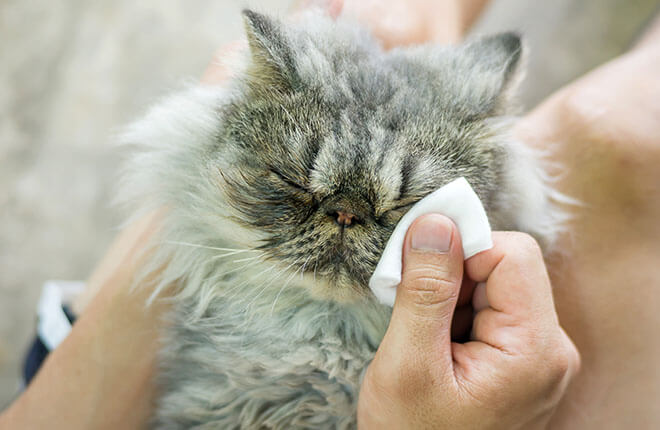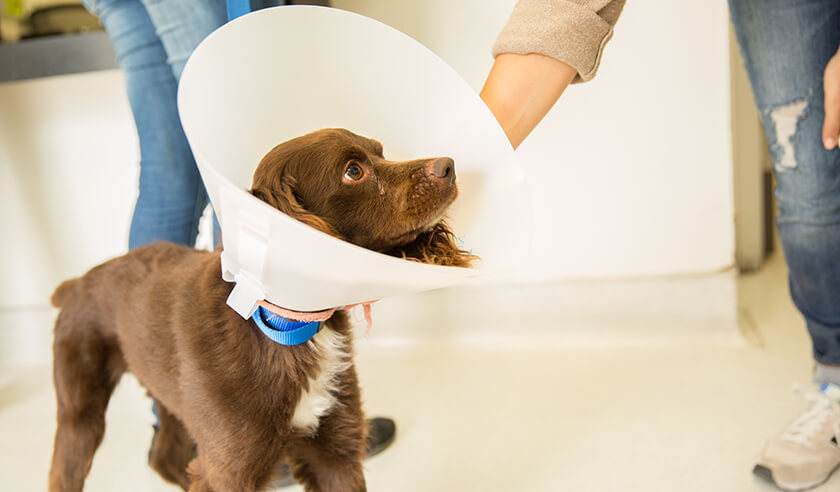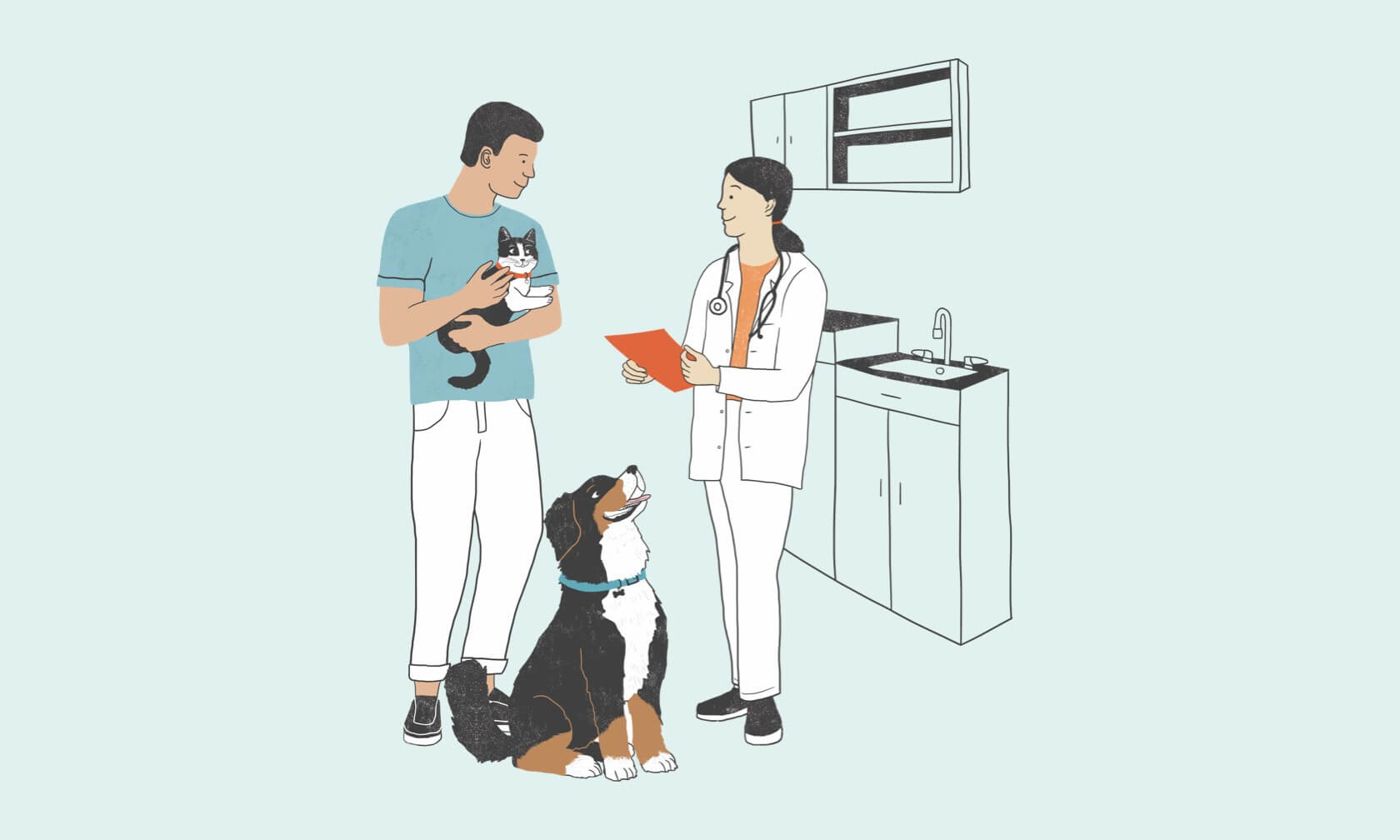We know how critical sight is to our everyday lives — but what about your cat? Do you need to worry about their vision? The short answer is yes! Cats can focus on small objects in the distance, making them great hunters and players. Preserving their vision helps them function in their environment comfortably and lets them do what comes naturally.
Common cat eye problems are the same as the ones in humans, such as conjunctivitis (pink eye), cataracts, corneal ulcers, glaucoma, and more. Knowing how to recognize common eye issues and their symptoms is important, but keep in mind that veterinary care is always needed to help protect your cat’s vision and maintain their overall health.
Conjunctivitis in Cats
Conjunctivitis occurs when the thin mucous membrane of the eye (conjunctiva) is inflamed. It’s more often caused by viral infections (feline herpesvirus type 1 or calicivirus) than bacterial infections. It can also be caused by environmental allergens or irritants such as dust, airborne chemicals, and plants.
Mild cases of conjunctivitis in cats can often resolve on their own. Still, it’s always recommended that you seek veterinary care so more serious eye issues can be ruled out.
Cataracts
Cataracts occur when the eye lens becomes cloudy or opaque instead of clear, diminishing the ability of light to reach the retina. Cataracts can affect one or both eyes, causing minimal visual impairment to total blindness.
For cats, the most common cause of cataracts is uveitis (inflammation within the eye), causing your cat’s immune system to view the lens as a foreign substance, damaging the lens and contributing to cataract formation. Some other potential causes include diabetes, hypertension (high blood pressure), infection, aging, or genetics. Monitoring for behavioral changes can help detect vision changes. For example, decreased agility, bumping into things in their normal location, reluctance to move around, or having difficulty locating their feeding bowls and/or litter box could indicate visual impairment.
There are no medications that can dissolve or slow the progression of the cataract. The typical treatment for most cataracts cases is surgery. A veterinary ophthalmologist performs a process called phacoemulsification, involving breaking down and removing the cataract and then replacing the lens with an artificial one. The good news is that many cats, due to the generally slow progression of the cataract, adjust well to the blindness if treatment is not pursued.
Corneal Ulcers
Corneal ulcers occur when the supportive middle layer of the cornea (the stroma) is broken by trauma. They sometimes cause a cloudy appearance to the eye because stroma absorbs the fluid from the tears.
Though there are several causes of corneal ulcers in cats, the most common cause is trauma, such as frequent rubbing of the eye, a scratch, or contact with a sharp object. Chemical burns from shampoos and other chemicals, or irritation from dust can also cause corneal trauma. Corneal ulcers can also be caused by bacterial or viral infections and endocrine diseases.
The primary symptom of corneal ulcers that cat owners notice is a sign of pain. The intense pain of the ulcer causes cats to paw and rub at their eyes. You will also notice redness, squinting, discharge, continuous blinking, or your cat may refuse to hold their eye(s) shut.
Treatment is determined by the depth and severity of the ulcer. Minor abrasions often heal within three to five days with antibiotic eye drops or ointment applied every four to six hours. Pain medications may be prescribed either topically or orally if necessary. Topical autologous serum treatments, using serum prepared from a sample of your cat’s blood, may also be prescribed. For deep corneal ulcers, surgery may be needed.
Glaucoma
Feline glaucoma is a condition where watery fluid builds up in the front part of the eye and cannot drain properly. As the fluid begins to accumulate, it puts pressure on the optic nerve and structures within the eye. With continued pressure, the optic nerve becomes damaged and prevents normal vision. Without treatment to relieve the pressure, blindness results. Progression of glaucoma can take weeks or months.
The primary cause of glaucoma is an inherited condition that’s rare in cats. Typically, with this form, both eyes are affected. Secondary glaucoma is most often caused by severe inflammation of the eye (called uveitis). The proteins and other debris generated by the inflammation prevent normal drainage. This results in fluid accumulation and pressure build-up. With this form, one or both eyes can be affected.
The typical cat glaucoma symptoms you may notice are increased tearing, redness, progressive cloudiness, squinting, and/or an enlarged or dilated pupil. Due to the increase in pressure, the eye may bulge, and your cat may rub at the eye due to discomfort and pain.
Unfortunately, glaucoma in cats is incurable. Medications, typically eye drops, can be used to help alleviate pain and clinical signs. They work by reducing fluid production and aid in fluid drainage. Surgery may be recommended for severe cases or those that do not respond to medications.
Any time you notice any abnormalities with your cat’s eyes, even if they seem minor, be sure to immediately have them evaluated by your veterinarian, as cat eye problem's can progress quickly and prompt treatment may be needed.
ZPC-01560R1





